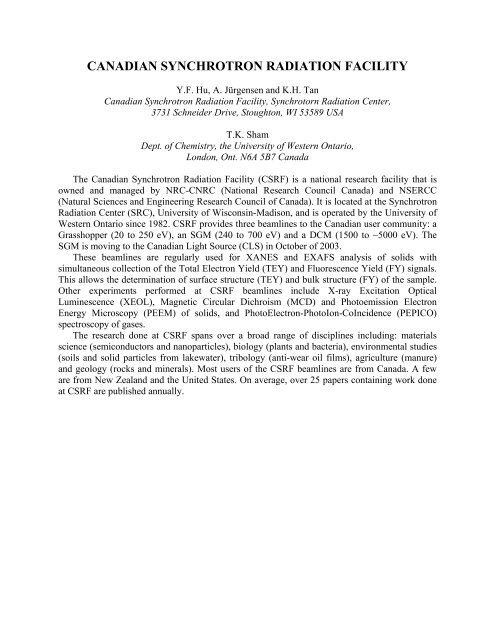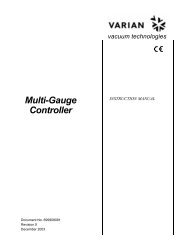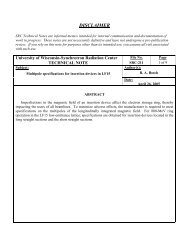SRC Users' Meeting - Synchrotron Radiation Center - University of ...
SRC Users' Meeting - Synchrotron Radiation Center - University of ...
SRC Users' Meeting - Synchrotron Radiation Center - University of ...
Create successful ePaper yourself
Turn your PDF publications into a flip-book with our unique Google optimized e-Paper software.
CANADIAN SYNCHROTRON RADIATION FACILITY<br />
Y.F. Hu, A. Jürgensen and K.H. Tan<br />
Canadian <strong>Synchrotron</strong> <strong>Radiation</strong> Facility, Synchrotorn <strong>Radiation</strong> <strong>Center</strong>,<br />
3731 Schneider Drive, Stoughton, WI 53589 USA<br />
T.K. Sham<br />
Dept. <strong>of</strong> Chemistry, the <strong>University</strong> <strong>of</strong> Western Ontario,<br />
London, Ont. N6A 5B7 Canada<br />
The Canadian <strong>Synchrotron</strong> <strong>Radiation</strong> Facility (CSRF) is a national research facility that is<br />
owned and managed by NRC-CNRC (National Research Council Canada) and NSERCC<br />
(Natural Sciences and Engineering Research Council <strong>of</strong> Canada). It is located at the <strong>Synchrotron</strong><br />
<strong>Radiation</strong> <strong>Center</strong> (<strong>SRC</strong>), <strong>University</strong> <strong>of</strong> Wisconsin-Madison, and is operated by the <strong>University</strong> <strong>of</strong><br />
Western Ontario since 1982. CSRF provides three beamlines to the Canadian user community: a<br />
Grasshopper (20 to 250 eV), an SGM (240 to 700 eV) and a DCM (1500 to ~5000 eV). The<br />
SGM is moving to the Canadian Light Source (CLS) in October <strong>of</strong> 2003.<br />
These beamlines are regularly used for XANES and EXAFS analysis <strong>of</strong> solids with<br />
simultaneous collection <strong>of</strong> the Total Electron Yield (TEY) and Fluorescence Yield (FY) signals.<br />
This allows the determination <strong>of</strong> surface structure (TEY) and bulk structure (FY) <strong>of</strong> the sample.<br />
Other experiments performed at CSRF beamlines include X-ray Excitation Optical<br />
Luminescence (XEOL), Magnetic Circular Dichroism (MCD) and Photoemission Electron<br />
Energy Microscopy (PEEM) <strong>of</strong> solids, and PhotoElectron-PhotoIon-CoIncidence (PEPICO)<br />
spectroscopy <strong>of</strong> gases.<br />
The research done at CSRF spans over a broad range <strong>of</strong> disciplines including: materials<br />
science (semiconductors and nanoparticles), biology (plants and bacteria), environmental studies<br />
(soils and solid particles from lakewater), tribology (anti-wear oil films), agriculture (manure)<br />
and geology (rocks and minerals). Most users <strong>of</strong> the CSRF beamlines are from Canada. A few<br />
are from New Zealand and the United States. On average, over 25 papers containing work done<br />
at CSRF are published annually.
















